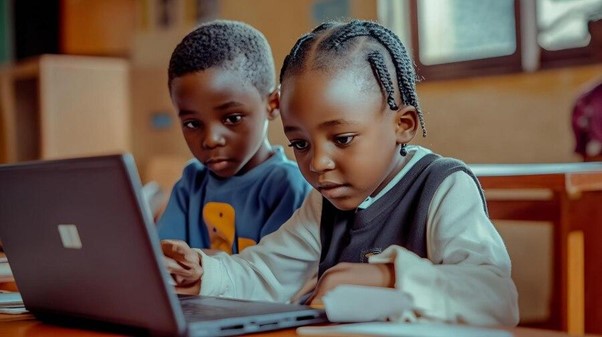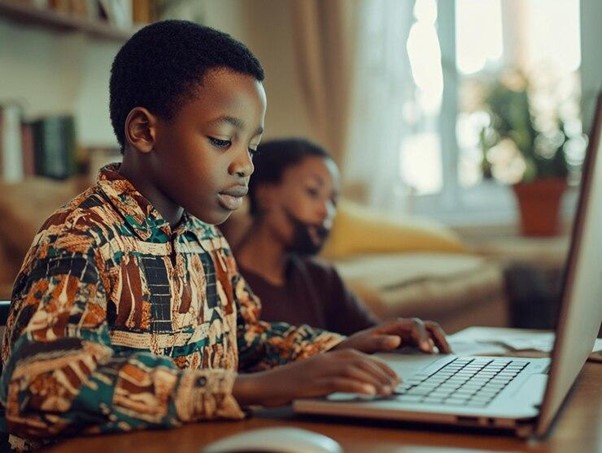Exploring Educational Content for Children in Nigeria
Education is often described as the foundation upon which nations build their future. Nowhere is this truer than in Nigeria, where the burgeoning population of children represents both a challenge and a profound opportunity. With over 44 million children enrolled in schools, Nigeria boasts one of the largest education systems in Africa. However, access to […]

exploring educational content for children in nigeria
Education is often described as the foundation upon which nations build their future. Nowhere is this truer than in Nigeria, where the burgeoning population of children represents both a challenge and a profound opportunity. With over 44 million children enrolled in schools, Nigeria boasts one of the largest education systems in Africa. However, access to quality educational content remains uneven, with significant differences between urban and rural areas, private and public institutions, and even among children in the same classrooms.
The Digital Revolution: A Beacon of Hope or a Mirage?
In recent years, digital technology has been heralded as the solution to Nigeria’s educational challenges. Tablets in classrooms, mobile apps for learning, e-books available at the click of a button—all these innovations promise to bring learning to the fingertips of every child, regardless of location. But there’s a catch. Not every child in Nigeria has access to the internet, nor the devices that would enable them to access digital content. In rural areas, where electricity is unreliable, and in many cases non-existent, digital educational tools are still a far-off dream.
Yet, the digital revolution has made a dent. In urban areas, private schools are increasingly using platforms like Google Classroom and Edmodo to enhance the learning experience. These tools allow teachers to share resources, track progress, and engage students in a way that traditional methods may not. For example, using animation or interactive lessons to teach science concepts that might be difficult to grasp with just a textbook has proven effective.
In fact, a more reasonable approach to education is the implementation of educational TV shows for kids Nigeria. Moreover, it is desirable that this educational content for kids Nigeria be interesting and with a focus on a specific area that needs to be strengthened. Example: if your educational program involves teaching English, then you can speed up the process if you unblock access channel 4 in the USA. By default, access channel 4 in the USA is blocked, but VeePN will fix this problem. This free channel broadcasts content in the UK, but VPN can make it available in the USA, Nigeria or wherever else.
Local Content, Global Standards: Striking the Balance
There’s a growing recognition in Nigeria that imported educational content, while helpful, cannot fully address the unique needs of Nigerian children. While textbooks from Europe or the United States might offer a solid grounding in basic subjects, they often fail to reflect the cultural, social, and economic realities of Nigeria. Children in the far reaches of Katsina, for instance, might not find much resonance in a textbook that uses snow or autumn leaves as metaphors to explain scientific concepts.
This is where local content creation comes in. There’s a thriving community of Nigerian educators, writers, and developers working to produce materials that speak directly to the Nigerian context. Whether it’s using stories from local folklore to teach values, or designing math problems around situations children in Nigeria encounter daily, these creators are bridging the gap between global educational standards and local relevance.
The success of TV programs like Tales By Moonlight—which blends storytelling with educational lessons—or mobile apps like ULesson, designed specifically for Nigerian students, underscores the importance of homegrown content. Local languages, too, are increasingly being incorporated into educational materials, acknowledging the diversity of linguistic backgrounds among Nigerian children.
Multilingualism and Literacy: Unlocking the Full Potential of Nigeria’s Children

Nigeria is home to over 500 languages. This linguistic diversity is both a blessing and a challenge. For many Nigerian children, the language spoken at home is not the language used in school. English is the official language of instruction in most Nigerian schools, but for children who speak Hausa, Yoruba, Igbo, or any number of indigenous languages at home, this presents a significant barrier to learning.
Multilingual education models have been proposed and, in some cases, implemented in Nigerian schools. These models encourage early education in a child’s first language, transitioning to English later on. At the same time, any student can read books and watch shows in their native language. This may require VeePN if the content is subject to regional restrictions. Studies have shown that children who begin their education in their native language are more likely to succeed academically, both in the short and long term. For Nigeria, where literacy rates remain a concern—particularly in the northern regions—embracing multilingualism in education could unlock the full potential of its young population.
However, implementing this is easier said than done. There are logistical hurdles—training teachers, producing materials in multiple languages, and managing diverse classrooms. Still, some regions and schools are making strides in this area. Can this model be scaled nationally? And if so, how will it transform Nigeria’s educational landscape?
Challenges and Opportunities: Bridging the Gaps
As we dive deeper into the topic of educational content for children in Nigeria, it becomes clear that there are myriad challenges. Poverty is perhaps the most pressing. Many children in Nigeria, especially in rural areas, are unable to access education due to the financial burden it places on their families. While the Nigerian government has made strides in providing free primary education, hidden costs—like uniforms, books, and transportation—still present barriers for the poorest families.
In addition to economic challenges, there’s the issue of overcrowded classrooms. In many public schools, classrooms often hold more than 50 students, making it difficult for teachers to provide individualized attention. Educational content, no matter how well-designed, can only do so much if the learning environment is not conducive to engagement and focus.
But despite these challenges, opportunities abound. Community-based learning initiatives, like the after-school clubs popping up in cities and villages alike, offer supplemental educational content outside the formal school system. These clubs often focus on vocational skills, life skills, and subjects like coding or environmental education—areas that may not receive adequate attention in the traditional curriculum but are vital for the future workforce.
Looking Forward: The Future of Education for Nigerian Children
What does the future hold for educational content for children in Nigeria? In many ways, it’s already here—blended learning models that combine digital tools with traditional teaching methods, locally produced content that speaks to Nigerian realities, and a recognition that multilingualism can be an asset rather than a barrier. As policymakers, educators, and parents continue to navigate the challenges of providing quality education to Nigeria’s children, the key will be adaptability and inclusiveness.
There’s no one-size-fits-all solution. But the future looks bright—if all stakeholders continue to invest in creative, innovative, and culturally relevant educational content. With continued focus, the children of Nigeria can become the leaders, innovators, and thinkers of tomorrow.
And it all starts with the content they absorb today.
